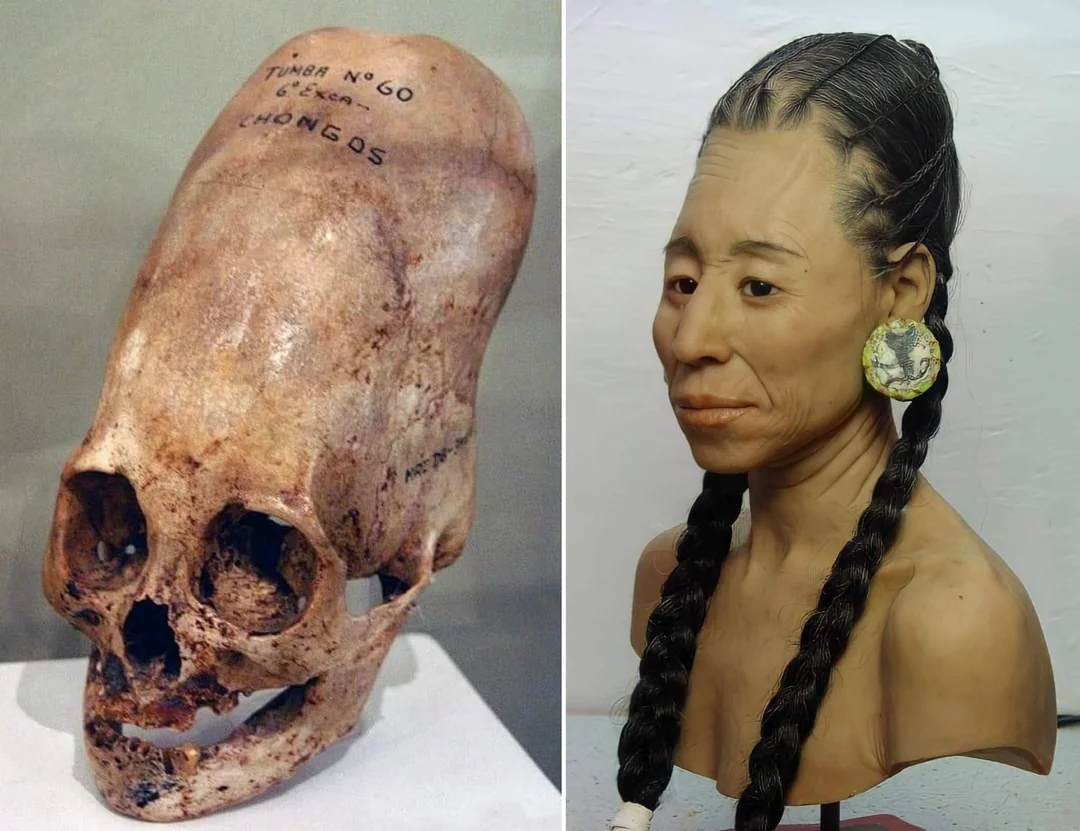Introduction
The Paracas Peninsula, located along the southern coast of Peru, is home to one of the most enigmatic and intriguing archaeological finds of the 20th century: the elongated skulls. Discovered in 1928 by Peruvian archaeologist Julio Tello, these skulls belong to the ancient Paracas civilization, which thrived from approximately 800 to 100 BCE. The discovery of hundreds of these elongated skulls has sparked widespread curiosity and speculation about the cultural practices of this ancient civilization, especially the practice of cranial deformation.

The Discovery and Significance
The discovery at the Paracas Peninsula revealed a complex and advanced society with rich burial traditions. Among the numerous findings, the most striking were the elongated skulls, which immediately drew attention due to their unusual shape and size. Unlike typical human skulls, these had a pronounced elongation, suggesting that this was a deliberate modification rather than a genetic anomaly.
The significance of these skulls lies not only in their unusual appearance but also in what they reveal about the cultural and social practices of the Paracas people. The practice of cranial deformation, observed in various ancient cultures worldwide, was particularly pronounced in Paracas, indicating a strong cultural emphasis on this form of body modification.
The Practice of Cranial Deformation
Cranial deformation is an ancient practice that involves the intentional shaping of the skull by applying external pressure, typically using cloth or other binding materials. In the case of the Paracas civilization, this process began in infancy when the skull bones are most pliable. The binding process was maintained for several years, resulting in a permanently elongated skull shape.
There are several reasons why ancient cultures might have engaged in cranial deformation:
- Social Status and Identity: In many cultures, altered skull shapes were a marker of social status or affiliation with a particular group. In the case of Paracas, the elongated skulls may have been a symbol of high social status or nobility, distinguishing the elite from the common populace.
- Aesthetic Preferences: Just as body modification practices like tattooing and piercing serve aesthetic purposes today, the Paracas might have found the elongated skull shape aesthetically pleasing or ideal.
- Ritualistic or Religious Beliefs: The practice may also have had spiritual or ritualistic significance, possibly related to beliefs about the head being the seat of spiritual power or intelligence.
The Cultural Context of the Paracas Civilization
The Paracas culture was a pre-Columbian civilization known for its significant contributions to art and textile production. They developed intricate weaving techniques, producing some of the finest textiles of the ancient Americas. These textiles often depicted complex iconography and served as burial garments, indicating a rich tradition of ceremonial and funerary practices.
The Paracas people also exhibited advanced knowledge of medicine, as evidenced by the discovery of trepanned skulls—an ancient form of cranial surgery. The existence of both elongated and surgically altered skulls in their archaeological record points to a society with sophisticated medical and cultural practices.
The Aftermath and Legacy
The discovery of the elongated skulls has led to various interpretations and theories, some of which venture into the speculative and fringe realms. While some have suggested extraterrestrial involvement or otherworldly origins, most archaeologists and anthropologists agree that these skulls are the result of deliberate cultural practices.
Modern scientific studies, including DNA analysis and cranial morphology studies, continue to shed light on the Paracas people and their practices. These studies have confirmed that the elongated skulls are human and result from intentional cranial deformation, rather than any congenital condition.
The Paracas skulls remain a subject of fascination, providing valuable insights into the diverse practices and beliefs of ancient cultures. They challenge modern perceptions of body modification and cultural expression, offering a unique window into the ways ancient civilizations understood identity, status, and aesthetics.
Conclusion
In conclusion, the elongated skulls of Paracas are more than just archaeological curiosities; they are a testament to the ingenuity and diversity of human cultural practices. The study of these skulls continues to enrich our understanding of the Paracas civilization and the broader tapestry of human history. As we delve deeper into the enigma of the Paracas elongated skulls, we uncover a fascinating glimpse into the complex and sophisticated world of this ancient Peruvian culture.

